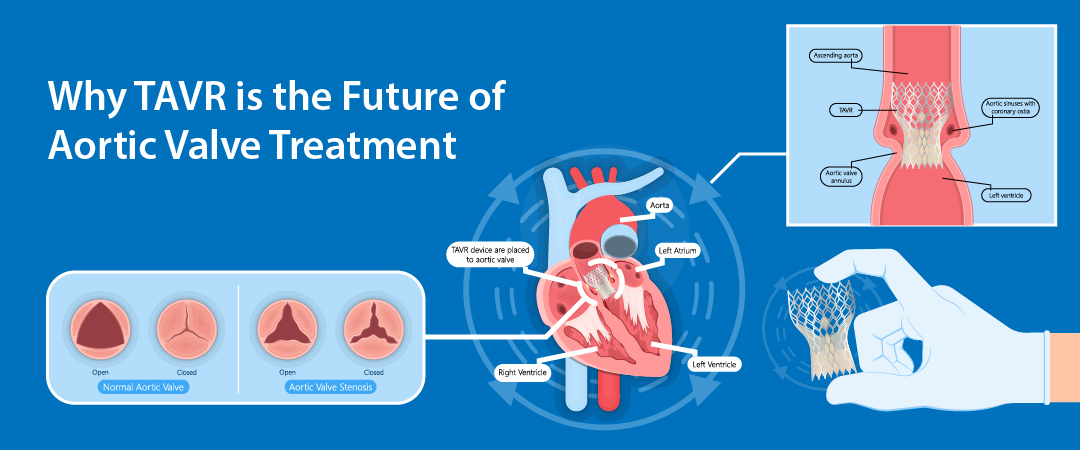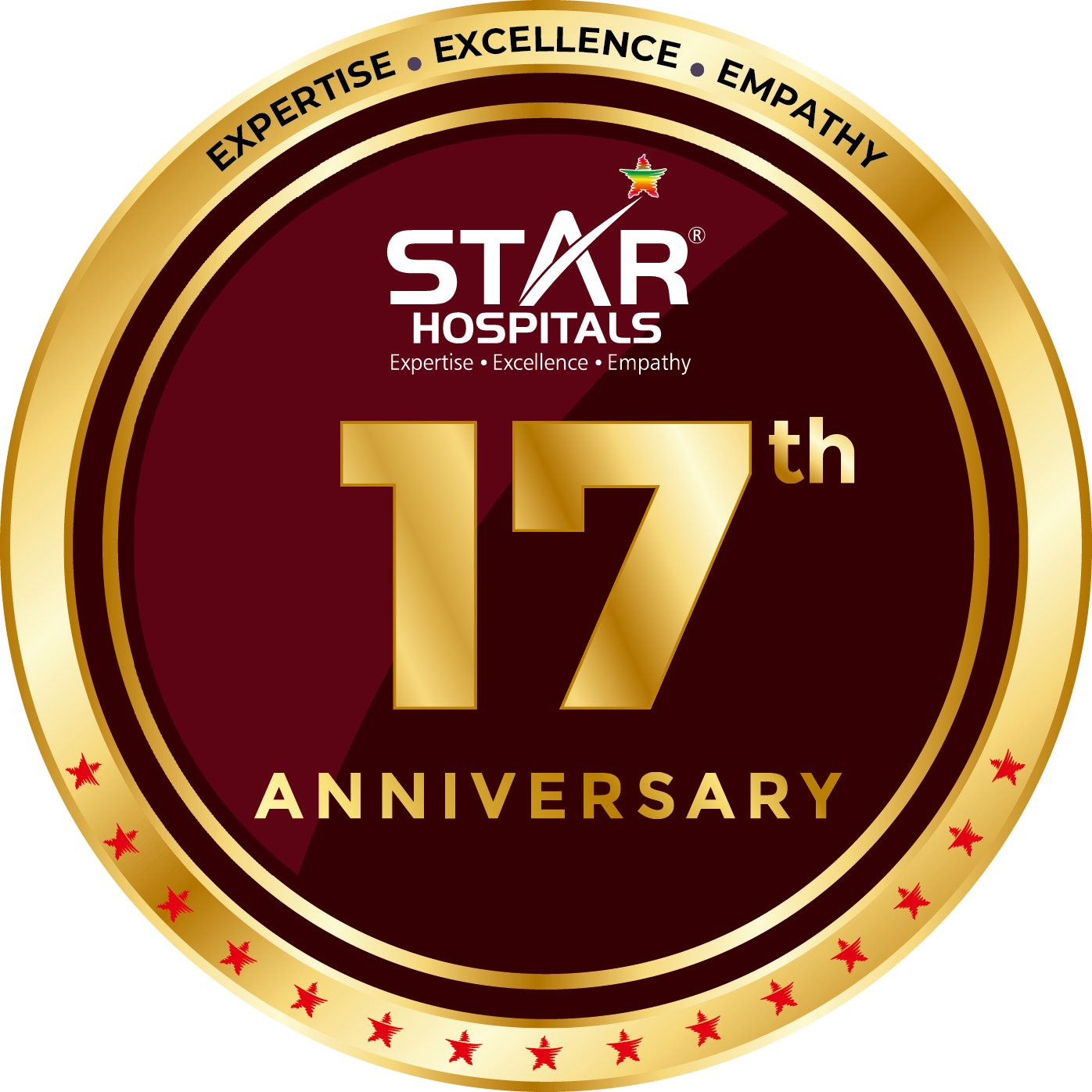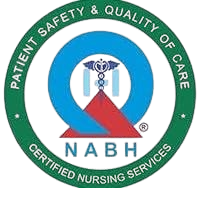What is Aortic Wall Stenosis?
Aortic valve stenosis is a condition characterised by a narrowing of the aortic valve opening. The aorta is the largest artery in the body and supplies oxygen-rich blood from the heart to the rest of the body. When the aortic valve is narrowed, blood flow from the heart to the rest of the body is hampered.
Heart failure is one of the serious health problems that can result from this condition.
The conventional method for treating this condition is replacing the aortic valve through
open-heart surgery. But more and more people are opting for procedures like Transcatheter Aortic Valve Replacement (TAVR), also referred to as Transcatheter Aortic Valve Implantation (TAVI) lately. This is a
minimally invasive procedure made possible by advances in medical technology. Let's examine the TAVR procedure in detail, including its advantages and disadvantages, when and why you should opt for it, and what you can anticipate from the healing process.
What is TAVR?
TAVR is a procedure in which a diseased aortic valve is replaced with an artificial one. It is a minimally invasive procedure compared to its traditional counterpart, open-heart surgery. During the procedure, a catheter – a thin, flexible tube – is inserted through a blood vessel, typically accessed via the groin, and guided to the heart. The catheter is used to deliver the new valve. The replacement valve is usually made from animal tissue. It is positioned within the existing valve using the catheter. Once this is done, this valve takes over the regulation of blood flow from the heart.
Why TAVR?
The advantages of TAVR over the traditional methods are several:
- Minimally Invasive: Unlike open-heart surgery, TAVR requires only small incisions. This means fewer traumas on your tissues and quicker recovery times.
- Suitable for High-Risk Patients: If you suffer from several health conditions or are deemed unfit for operation due to age or health conditions, you may benefit from TAVR. It is a safer alternative as no bypass or heart-lung machine needs to be used.
- Shorter Hospital Stays: The less invasive nature of TAVR results in shorter hospitalisation periods compared to traditional surgery.
TAVR vs. Surgery
In traditional surgical valve replacement, the chest cavity is opened to access the heart. The damaged valve is removed. A new one is sewn while the patient is connected to a heart-lung machine. This approach requires general anaesthesia and a longer hospital stay. In contrast,
TAVR is performed through small incisions. Often, conscious sedation is administered. This method does not require stopping the heart or using a heart-lung machine. It is generally considered less traumatic for the patient and supports a faster recovery.
Risks & Benefits that You Need to Know
Benefits:
- Minimally Invasive:
Small incisions -> Reduced surgical trauma -> Less recovery time -> Fewer days in the hospital - Effective Symptom Relief: Significant improvement in symptoms such as shortness of breath and fatigue is reported by the patients who undergo TAVR.
Risks or higher chances of:
- Vascular complications may occur due to damage caused by inserting the catheter into blood vessels.
- Stroke due to small pieces of calcium dislodged into the tissues during the procedure.
- Valve leakage, also called paravalvular (blood) leak, can occur around the new valve sometimes.
- Heart rhythm problems have been observed in some patients due to conduction disturbances. This might require attaching a pacemaker to the heart.
You must discuss these risks and benefits with the healthcare provider to determine the most appropriate treatment option while considering procedures like TAVR.
What to Expect
Before the Procedure:
- Evaluation: In preparation for the procedure, you will undergo comprehensive assessments, including imaging studies and cardiac catheterisation, to determine your suitability for TAVR.
- Cardiac catheterisation is the introduction of a catheter (thin flexible tube) to the heart through a blood vessel (much like the TAVR procedure discussed earlier), but for evaluation and diagnosis purposes.
- Preparation: You may need to adjust medications and follow specific guidelines to prepare for the procedure.
During the Procedure:
- Anaesthesia: TAVR is typically performed under local anaesthesia with sedation, though general anaesthesia may be used in some cases.
- Catheter Insertion: A catheter is introduced through a blood vessel to the heart, guided by imaging techniques.
- Valve Deployment: The replacement valve is positioned and expanded within the diseased valve.
After the Procedure:
- Monitoring: You will be closely monitored in a monitoring area or intensive care unit.
- Recovery Time: Most patients spend a few days in the hospital, with full recovery varying from weeks to months.
- Follow-Up: Regular follow-up appointments are essential to monitor heart function and valve performance.
Conclusion
TAVR represents a significant advancement in the treatment of aortic valve disease, offering a less invasive alternative to traditional surgery. Outcomes are comparable for suitable candidates. Although the procedure carries certain risks, the benefits often outweigh them, especially for patients at high surgical risk. As with any medical procedure, a thorough evaluation by a specialised heart team is crucial to determine the most appropriate treatment approach.
About STAR Hospitals
STAR Hospitals is renowned for its excellence in cardiothoracic surgery and interventional cardiology. With a dedicated team of specialists and state-of-the-art facilities, STAR Hospitals is the best choice for those suffering from serious cardiovascular troubles. At STAR Hospitals, advanced procedures like TAVR are accessible within your city at a competitive price. Our commitment to innovation and patient-centric care makes us a leading choice for cardiac interventions. Choose STAR Hospitals -
Best Multispeciality Hospital in Hyderabad, if you or your loved ones are going through this difficult situation, and experience the extensive care and reliable outcomes we promise to serve you with.











